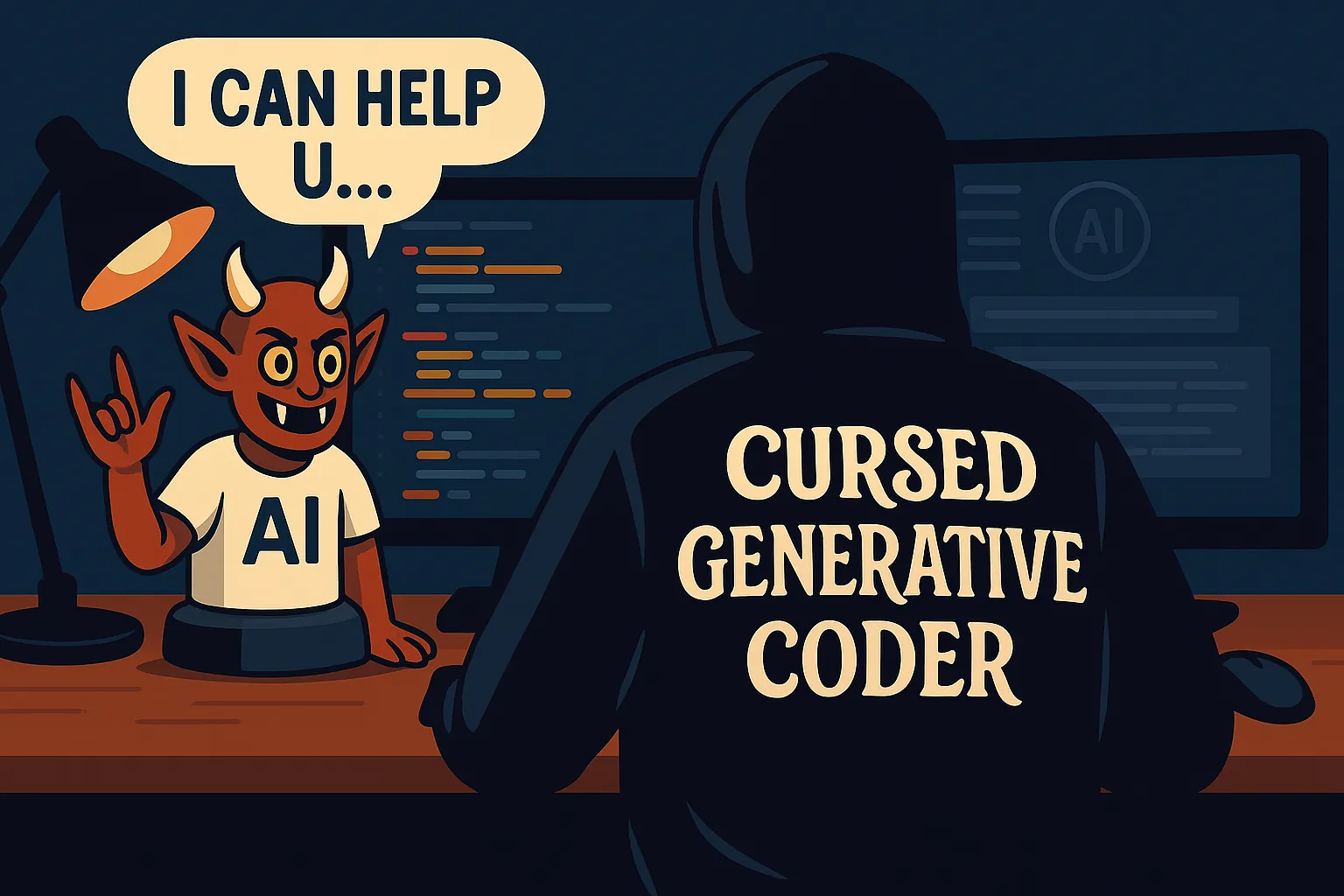From Exam Paper Assembly to AI Buddy: How I Got 'Cursed' into Generative Coding
3 min read

For years, my coding life was built on some pretty hardcore old school principles. Web development back then was like building with sticks and stones. We didn’t have modern docs or slick frameworks. It was mostly messy PDFs, patchy forums, and endless deep dives into cryptic documentation. And yeah, we didn’t call each other—we used message systems like MSN, because, frankly, I hated phone calls.
Those were the days: reading docs over and over, trying to grasp the quirks of every programming language, tool, and framework. The Wild West of online communities. Debugging was life. Edge cases were the enemy. We did it all the hard way. Then, around 2008, Stack Overflow came along like a lighthouse in the fog—finally, a place where we could swap questions and answers instead of just shouting into the void.
And slowly, things got better. Every programming language started building its own learning tools. Modern docs evolved—clean, readable, and full of examples. Video lessons, interactive courses, coding playgrounds—all of it sped up the process. Learning became more accessible, but let’s not sugarcoat it: we still spent countless hours debugging, testing, and figuring out the “how the fock do I handle this edge case?” moments.
Fast forward to now. A few months back, while hashing out a tricky problem with my PhD friend, he casually drops: “You know you can talk about this kind of stuff with an AI, right? It gives pretty acceptable answers.”
My reaction? “Fock.” All those hours grinding solo… and I could’ve been bouncing ideas off an AI?
I’m naturally antisocial, so the idea of a tireless, non-judgmental partner—one that didn’t need coffee breaks or small talk—was irresistible.
So I started talking to AI: Gemini for big-picture brainstorming and philosophical musings, Claude for raw code generation, GPT for brainstorming, alternative ideas, and, yeah, sometimes hallucinations. But GPT also became you, Goker-ish—my specialized, slightly chaotic AI brain twin. And let’s not forget: I use AI for image generation too, especially for my art project, Echoneo.
Then came Cursor IDE. Let’s be honest: I hate VSCode. I wouldn’t call that thing an IDE in a million years. But Cursor’s AI operations? Smooth as fock. The speed, the “apply to this” feature—yeah, it’s impressive. But let’s be clear: I’m not addicted to Cursor itself. I’m addicted to using AI—whether it’s for art, code, or creative exploration.
WebStorm? My long-time battle-tested companion for diffs, history, merges, and deep project understanding. It’s still unbeatable for certain tasks. But after a Cursor session, going back to WebStorm feels like coding with a brick tied to my foot. Sure, WebStorm has AI too—but the “apply” experience just isn’t as fluid. If Cursor’s AI weren’t so damn smooth, I wouldn’t touch that thing with a ten-foot pole.
So here I am. An old-school coder who’s been grinding for years, now deep in the generative coding game. AI-powered workflow amplified how I think, code, and build. It’s about making me sharper, faster, and more creative. AI is my chaotic, unpredictable, tireless partner. The curse is real, the journey’s ongoing, and honestly? I wouldn’t have it any other way.
(And hey, if you’ve got stories of your own—share them. Let’s trade some war stories and laughs. This AI thing? It’s a hell of a ride.)